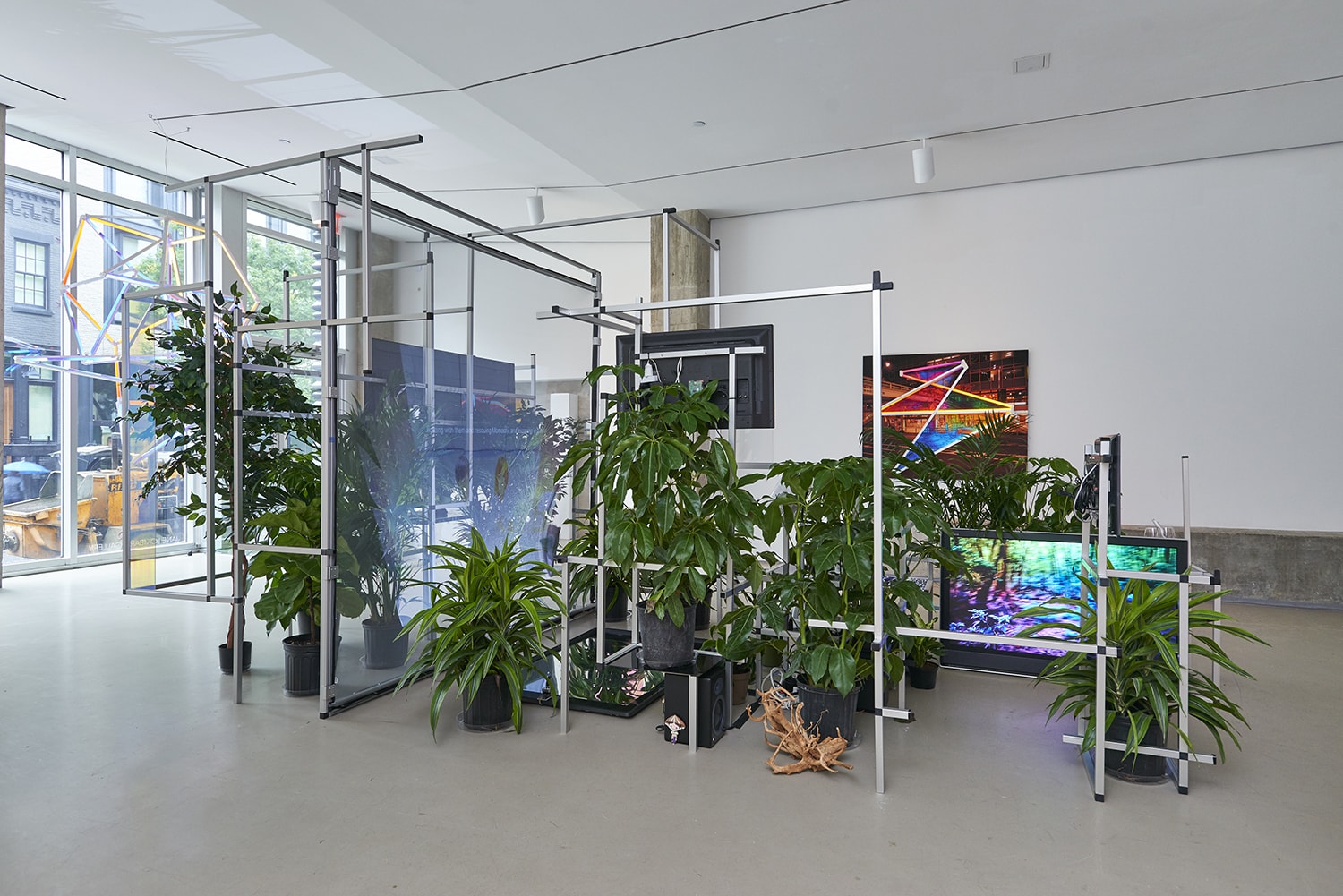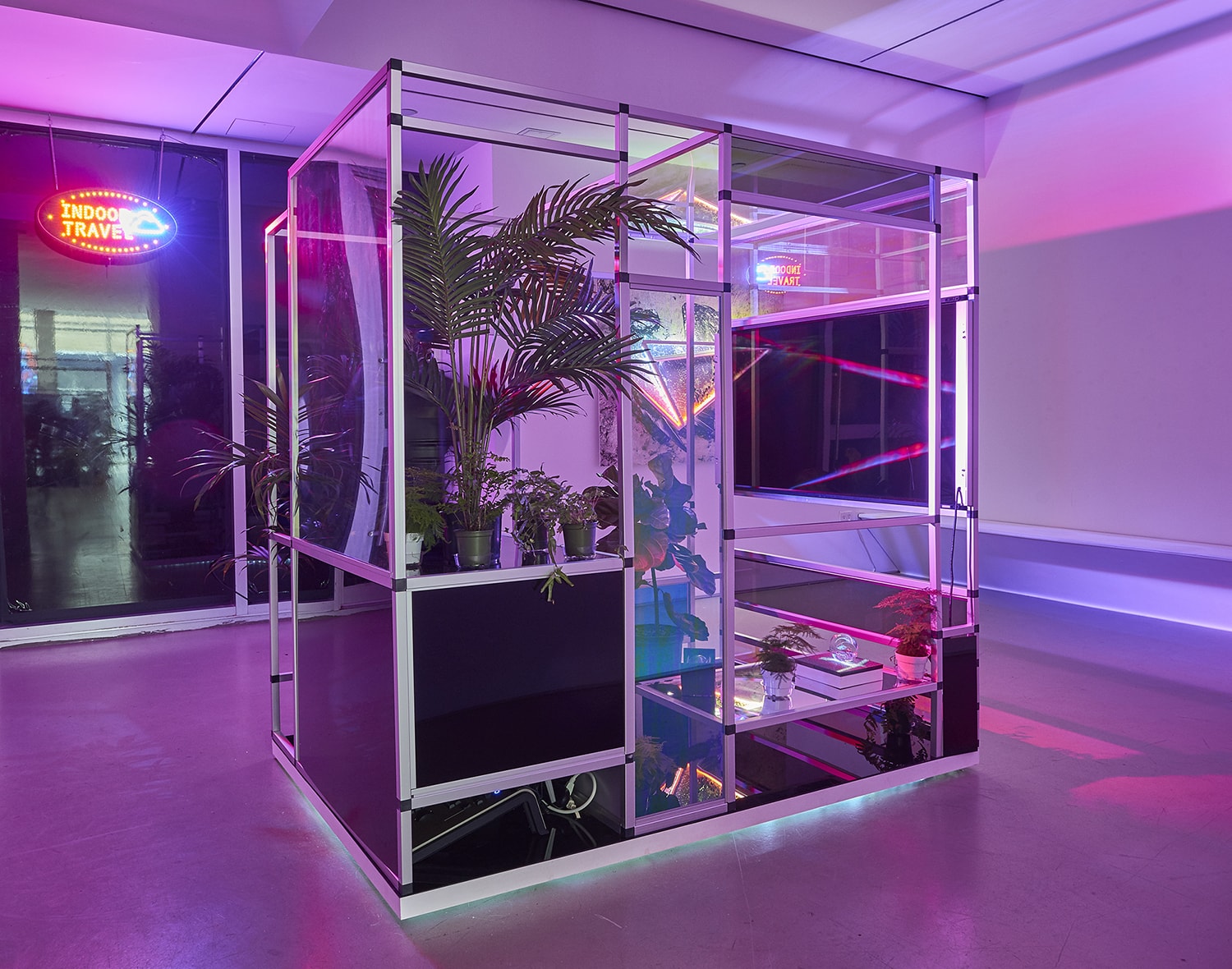Shows
James Clar’s “The World Never Ends”


Drawing on a range of cultural references to reflect on universal issues, James Clar is a 21st century global citizen, and his digitally derived art smartly reflects it. After a stint in the United Arab Emirates, briefly working as a lighting architect before reverting to an artistic career, Clar moved back to New York in 2012, where he has continued to push his screen-based art toward more structural forms and architectural installations.
Clar’s second solo show at New York’s Jane Lombard Gallery advances his ongoing exploration of the conceptual and narrative potential of light and digital technology by referencing one of the oldest Eastern philosophical texts, the Bardol Thodol—or as it’s known in the West, the Tibetan Book of the Dead. Mining the notion of a dreamlike state between death and the next rebirth, Clar draws parallels between mythology, film, digital technology and the Internet in a set of thematically related installations, videos, sculptures and photographs.
The centerpiece of the exhibition is the multi-channel video installation Tibetan Book of the Dead (Chapters 1, 2, 3) (all works 2018). Simulating a forest environment with actual plants, rocks and water arranged within an architectural, frame-like, metal structure, the imaginative installation presents three screens playing video interviews with professional gamers, who detail the endless hours they spend in virtual reality. Shot in a luxury hotel room in Tokyo, the videos feature two young male subjects and a 30-something married couple sharing stories of their eSport lifestyles, which include forgoing fun and food in the pursuit of higher scores. When asked about their dreams, the woman, Choco-san, recalls a recurring nightmare of being chased by zombies, saying it’s like a video game that she’s created in a state of reverie. On the outer wall of the installation is Aokigarhara / The Sea of Trees, a video of a phantom figure wandering through the notorious titular forest in Japan, which is known as a popular site for suicides.
Clar’s succinct documentaries are interspersed with footage of battling elks, rolling dice and a game of chess, jungle animals, and crowds rushing through Tokyo or sitting on the subway while tapping on phones. By contrast, Aokigarhara (edited frame by frame with Photoshop to erase the figure’s body and fill the silhouette with imagery of the surrounding forest) shows the apparition becoming one with a natural environment.
Photographs on the gallery walls and a light sculpture suspended from the ceiling encircle the main video installation. The photos include portraits of three of the gamers, faceless, as they exist in virtual space, their only recognizable features being their sports clothes with sponsorship logos. Next to these are images of a Tokyo cityscape, and a woodland scene that mixes an extinct tree from Yosemite National Park with a view of Aokigahara. The pictures are overlaid with geometric “portals,” configured with LED light bars and color filters that are linked by 3D-printed connectors, while the suspended LED light sculpture, Gravitational Collapse, presents interlocking geometric forms with fluctuating shades of orange and blue symbolizing different phases of the sun.
In a second space of the gallery, Clar presents another architectural structure laden with plants and objects related to time and space travel. The installation, titled Time Compression (A Light at the End, A Light at the Beginning), comprises a small, room-like metal structure filled with plants and a video combining two sci-fi movies, Stanley Kubrick’s 2001: A Space Odyssey (1968) and Gaspar Noé’s Enter the Void (2009). Instead of mixing the films sequentially, Clar sampled them frame by frame and reordered them according to where they correspond on the visible color spectrum. His new, four-hour movie is then projected through a dense filter onto a wall fitted with a bench so that viewers sitting on it face the projector, becoming physically immersed in the eerie film imagery.
“The World Never Ends” was a survey of fantastic things Clar has envisioned in a computer and painstakenly brought to existence for consideration in the real world, presenting a fascinating exploration of the ways in which boundaries between realms may be more fluid than we expect.

Paul Laster is a New York desk editor of ArtAsiaPacific.
James Clar’s “The World Never Ends” is on view at Jane Lombard Gallery, New York, until October 20, 2018.







